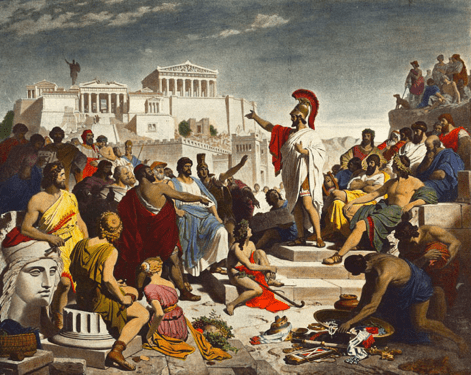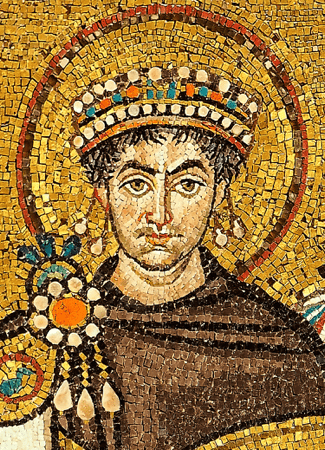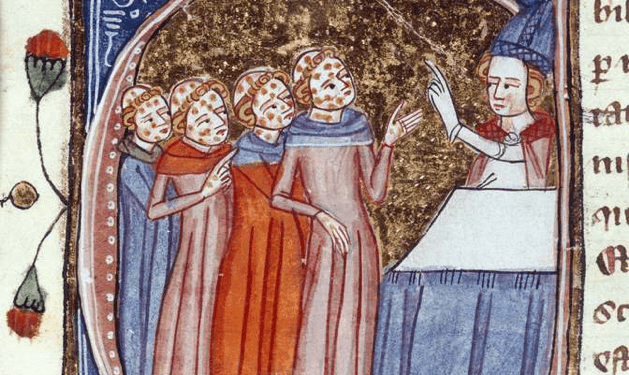Greek Diaspora History
Plagues in Ancient Greece
Plagues in Ancient Greece & Medieval Greece
There have been multiple plagues in Ancient Greece and Medieval Greece, where Greeks have had to endure disastrous consequences.
The word “plague” comes from the Latin word plaga meaning “stroke” or “wound”. The plagues after the middle ages however, began to be referred to as “epidemics”. This word comes from the Greek epi “upon” and demos “people”. The word “pandemic” includes the Greek pan “all”, referring to the more severe epidemics as it affects everyone.
Three of the most devastating plagues in Ancient Greece and Medieval Greece are:
- The Plague of Athens.
- The Plague of Justinian.
- The Black Death (also known as the Black Plague).
Plagues in Ancient Greece – The Plague of Athens
The plague of Athens devastated the flourishing Ancient Greek city in 430 B.C..
After initially subsiding, the plague of Athens returned twice – once in 429 B.C. and once in 427 B.C., not entirely dissipating until 426 B.C.
Key facts about the Plague of Athens:
- It was the plague that killed Pericles.
- It lasted (on and off) for 4 years.
- The cause of the plague continues to be debated to this day. Theories include: influenza, typhus, typhoid, bubonic plague, smallpox, and measles.
- The death toll is estimated to have reached 75,000 to 100,000 – about 25% of the city’s population.
- The plague devastated Athens during the Peloponnesian War and likely led to the defeat Athens in the war.
- Thucydides’ accounts of the Plague of Athens are recorded in his work History of the Peloponnesian War, which is considered one of the greatest pieces of literature from Ancient Greece.
- Researchers continue to debate whether or not this was in fact a “plague”.
Click here to learn more about the Plague of Athens – the deadliest plague in Ancient Greece.
Plagues in Medieval Greece – The Plague of Justinian
The Plague of Justinian was a pandemic that largely impacted the Eastern Roman Empire, more commonly known as the Byzantine Empire during 541-542 AD. The plague continued to reappear and wreak havoc across the Mediterranean until 750 AD.
Key facts about the Plague of Justinian:
- Justinian was the Byzantine Emperor between 527-565 AD.
- Justinian was one of the most successful Byzantine Emperors who ruled over the empire at the peak of its geographic size.
- The plague was named after Justinian as it occurred during his reign and because he contracted the plague himself.
- Justinian recovered and survived the plague.
- Most of what we know about the Plague of Justinian is a result of the work of Procopius in his book the Secret History.
- The symptoms of the plague included delusions, nightmares, fevers, and swellings (in the groin area, armpits, and behind the ears).
- DNA testing in 2013 of bones from plague confirmed that the type of plague was in fact the bubonic plague (Yersinia pestis).
- The bubonic plague likely originated in Central Asia, predominantly in China and North East India.
Plagues in Medieval Greece – The Black Plague
The Black Plague, also known as Black Death, was a devastating global pandemic that wreaked havoc across Europe and Asia in the mid 14th Century. There are many accounts about the Black Plague in Western Europe, but most recent publications on the Black Plague appear to leave out the impact on the Byzantine Empire and the Greeks.
Key facts about the Black Plague:
- The global death toll was approximately 75–200 million!
- The plague lasted on and off for a about 325 years, between 1346 and 1671.
- The peak of the pandemic was between 1347 and 1351.
- The plague hit the entire content of Europe the hardest.
- The disease was a form of the bubonic plague (Yersinia pestis) and was transmitted by fleas on animals such as wild rodents.
- The bubonic plague likely originated in Central Asia, predominantly in China and North East India.
- Many aren’t aware that the plague was in Greece.
- A widely-accepted theory is that the plague was stopped through the implementation of quarantines.
- It might surprise you to learn that the bubonic plague still exists. However, today the plague is treatable with antibiotics.
Click here to learn more about the Black Plague – one of the deadliest plagues in Ancient Greece and Medieval Greece.
Begin your journey to γνῶθι σεαυτόν and trace your ancestry. There are a number of DNA tests available but the most accurate and most trusted of them all is Ancestry.com



